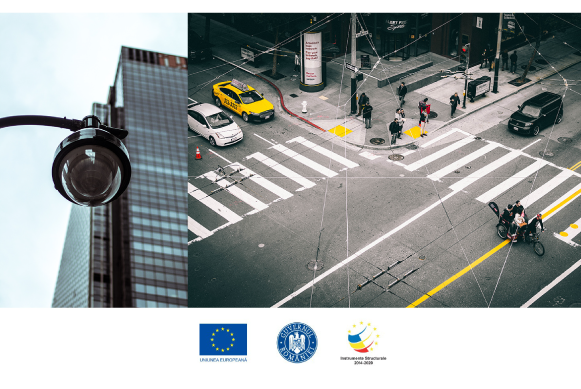
Practical Applications for Automatic License Plate Recognition
Automatic license plate recognition (LPR – License Plate Recognition) is a technology that uses optical character recognition (OCR) on images to read vehicle registration plates. As part of the “MR – IOT – Developing an Intelligent Road Traffic Monitoring Platform” project, we have explored many LPR investment opportunities for municipalities and central government entities in charge of traffic related law enforcement.
Optical Character Recognition (OCR) is already widely used as a form of data entry from printed paper data records, such as passport documents, invoices, bank statements, computerized receipts, business cards, mail, printouts of static-data, or any suitable documentation. The same approach is used for capturing photographic video or images of license plates, through which they are processed by a series of algorithms that are able to provide an alpha numeric conversion of the captured license plate images into a text entry.
As a whole, a series of six primary algorithms are necessary for a License Plate Recognition system to be successful: license plate localization, license plate sizing and orientation, normalization, character segmentation, optical character recognition, and syntactical/geometrical analysis.
In order to identify opportunities and possible applications for this technological solution, we used the Design Thinking approach, which is user-centered. This approach focuses on humans first and foremost, seeking to understand people’s needs and come up with effective solutions to meet those needs. It is what we call a solution-based approach to problem-solving.
By performing several design thinking sessions focused on the practical applications of LPR, we identified the following cases, centered on users from the municipalities and other government entities in charge with traffic and related law enforcement:
Mandatory Vehicle Insurance verification – by using LPR, a check can be performed against the database containing the insurance contracts, thus identifying the vehicles that violate the law. The same approach can be used for Mandatory Vignette verification or Technical inspection verification.
Illegal parking – by using CCTV, as well as mobile cameras installed on public transportation coupled with GPS capabilities as well as a GIS system containing the illegal parking zones, we can identify the vehicles that are illegally parked.
Parking – the plate number is used to automatically enter pre-paid members and calculate parking fee for non-members (by comparing the exit and entry times). The same method can be used for Access Control for authorized members in a secured area, thus replacing or assisting the security guard. The events are logged in a database and can be used to search the history of entries and exits.
Stolen cars – the ‘black list’ of stolen cars or unpaid fines can be updated in real time and provide an immediate alarm to the police force. The LPR system is deployed on the roadside and performs a real-time match between the passing cars and the list.
Tolling and Border Control – the car number is used to calculate the travel fee in a toll-road or a bridge toll, or it’s registered in the entry or exits of the country, and used to monitor the border crossings and cut short the typical long lines.
The project “MR – IOT – Developing an Intelligent Road Traffic Monitoring Platform”, is developed by the company Dragan & Asociatii.
This project is co-financed through the European Regional Development Fund – Priority Axis 2 – “Information and communication technology for a more competitive digital economy” by the Operational Programme “Innovations and Competitiveness” 2014-2020.
The contents of this material do not necessarily represent the official position of the European Union or of the Romanian Government.














